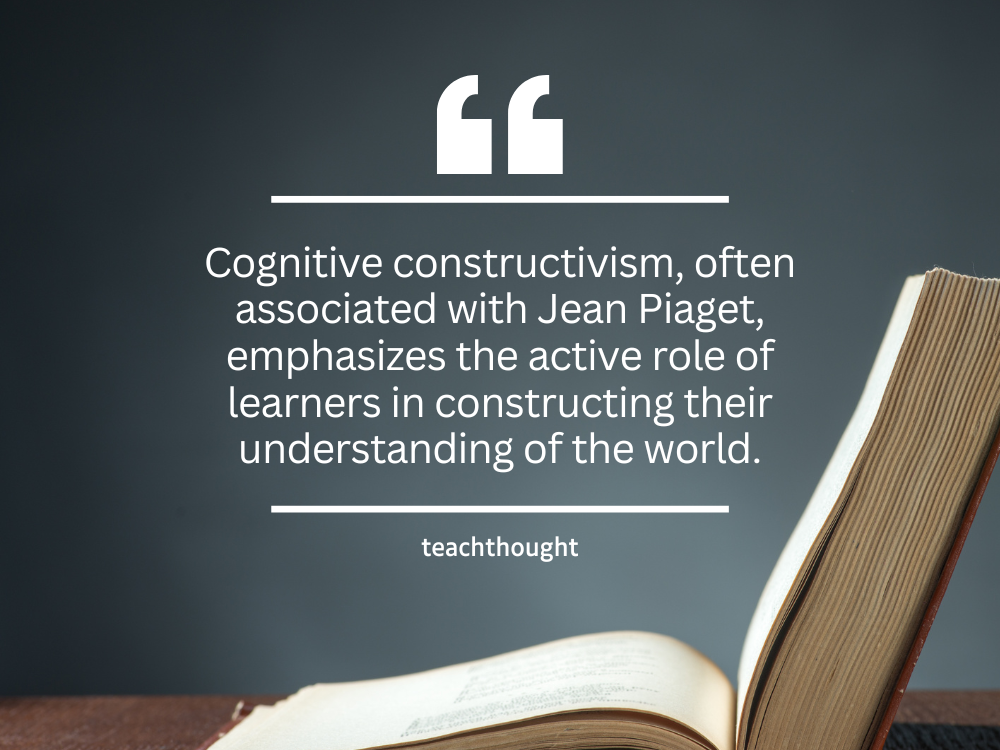Learning theory isn’t generally high on the list of practicing teachers.
For starters, teachers are busy poring over the classic–or emerging–learning theories that can inform their teaching on a day-to-day basis. Secondly, much of K-12 pedagogy in the United States is subject to the constraints of academic standards, district pacing guides, curriculum maps, etc.
Accordingly, learning theory is more commonly studied in college than in teacher professional development sessions or at home after grading papers.
So let’s take a dive and see what there is to learn about the learning theory.
Summary
It suggests that learning occurs through the assimilation of new information into existing cognitive structures (schemas) and the accommodation of these structures to incorporate new knowledge. Educators can apply constructivist principles by engaging students in hands-on activities, encouraging inquiry-based learning, and providing opportunities for collaborative problem-solving.
Details And Facts About Cognitive Constructivism

Active Learning
Cognitive constructivism emphasizes that learners actively construct their understanding of the world through experiences rather than passively receiving information. Learners are viewed as active participants in the learning process who constantly engage with their environment, assimilating new information into existing cognitive structures and accommodating these structures to accommodate new knowledge.
Cognitive Constructivism
Cognitive Constructivism is closely associated with the work of Swiss psychologist Jean Piaget. Piaget proposed a theory of cognitive development that outlined stages through which children progress as they construct their understanding of the world. These stages include the sensorimotor, preoperational, concrete, and formal operational stages, each characterized by distinct cognitive abilities and ways of thinking.
Schemas and Assimilation/Accommodation
Central to cognitive constructivism is schemas, which are mental frameworks or structures that individuals use to organize and interpret information.
According to Piaget, learning involves assimilating new information into existing schemas and accommodating these schemas to incorporate new knowledge. This process of assimilation and accommodation enables learners to adapt their understanding of the world as they encounter new experiences.
Constructivist Pedagogy
Cognitive constructivism has implications for teaching and learning practices. Constructivist pedagogy emphasizes hands-on, experiential learning activities that actively engage students in constructing their understanding of concepts.
Teachers facilitate learning by posing open-ended questions, encouraging exploration and inquiry, and providing opportunities for students to collaborate with peers. Additionally, educators scaffold learning by providing appropriate support and guidance to help students progress through the zone of proximal development (ZPD), where they can achieve tasks with assistance they could not accomplish independently.
Related: Behaviorism, Communal Constructivism, Social Learning Theory, Zone of Proximal Development, Vygotzksy’s Sociocultural Learning Theory, Feedback Loops In Learning, Gradual Release of Responsibility, Cognitive Load Theory
Tips For Teaching With The Communal Constructivism Theory In The Classroom
To integrate cognitive constructivism theory into their classrooms, teachers can implement the following strategies:
For starters, create opportunities for active learning experiences. Encourage students to engage in hands-on activities, problem-solving tasks, and inquiry-based projects that allow them to construct their understanding of concepts. Provide materials and resources that support exploration and experimentation, fostering a learning environment where students are actively involved in constructing knowledge through firsthand experiences.
Teachers in the classroom can foster a supportive and collaborative learning environment. Encourage peer interactions and collaborative problem-solving activities where students can learn from one another through discussion, debate, and shared exploration. Facilitate group work and cooperative learning tasks that promote social interaction and collaboration, providing opportunities for students to construct meaning together and learn from diverse perspectives.
Also, by providing scaffolding and guidance to support students’ learning, central tenels of the learning theory can be implemented in even the busiest of classrooms. Teachers can recognize the zone of proximal development (ZPD) and provide appropriate levels of support to help students progress from their current level of understanding to more advanced levels. Offer structured prompts, cues, and guidance as needed, gradually reducing support as students become more independent learners.
Scaffold learning experiences that build on students’ prior knowledge and skills, helping them develop a deeper understanding of concepts through guided practice and feedback.

